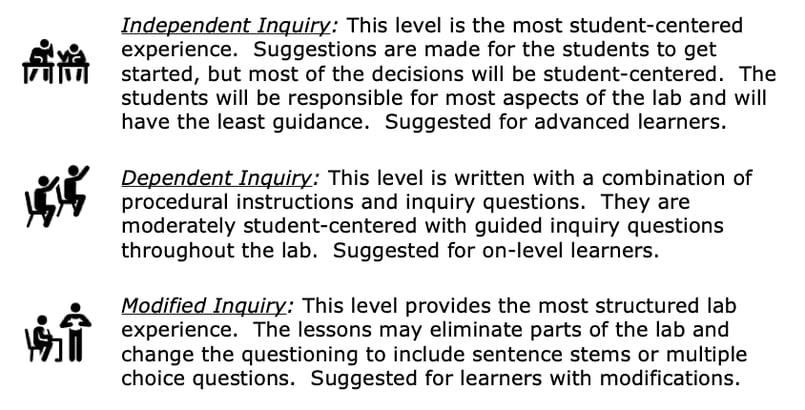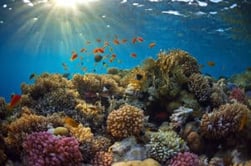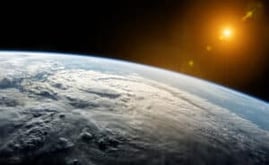Groundwater Distribution Inquiry Lab
Middle School Inquiry Lab on Groundwater Distribution
In this lab students will focus on how groundwater accumulates and how humans can impact this resource.
Each inquiry lab will contain an essential question that will drive the lesson and make students think. For this lesson, the essential question is:
- How do geologic features impact the collection of groundwater?
BACKGROUND INFORMATION AND MATERIALS LIST:
Students will begin the lab by reading the essential question and background information. This can be done individually, as lab groups, or as a whole class. If you consider lab groups, you also might include some type of whole class formative checks before digging into the lab.

Materials List (Teacher Demo):
- clear plastic container (shoebox size)
- sand
- gravel
- soil
- clay
- weed barrier
- water
Materials List (Student Activity):
- 3 beakers
- sand
- gravel
- water
PROCEDURE:
This inquiry includes a teacher demo and a student lab. For the teacher demonstration, you will focus your information on the uneven distribution of groundwater. Using the shoebox to contain all of the necessary materials, you will begin to layer the box with clay. After you have created different size depressions, you will follow further instructions on how to layer the rest of the shoebox. Applying water across the surface, students can see how surface water collects underground and becomes groundwater. Once the demonstration is complete, students will have a better understanding on how uneven groundwater collects underground.
The student portion of the inquiry lab will have students test how much water can saturate the different “soil” types before pooling at the surface. Students will take two beakers, one with gravel and the other with a sand and gravel mixture and add water to each. Students will keep track of the amount of water poured and record exactly how much water each beaker held and compare the two. As a result of both the demo and student inquiry lab, students should have a better understanding how groundwater unevenly accumulates and how human activities can impact the quality of this resource.
CHECK FOR UNDERSTANDING:
At this point in the lab, students will be checked for understanding by answering questions about their findings. Here is one that comes with the lab:
- What does this model show us about groundwater and soil types?
CONCLUSION
Students will go back to the essential question and write a CER (Claim, Evidence, Reasoning) to conclude the lab. Once completed, students will reflect back on their learning by answering the following questions:
- What conditions could cause the water table levels to increase? Why?
- What could cause a decrease? Why?
- What human activities could impact groundwater?
MODIFIED AND INDEPENDENT INQUIRY VERSIONS
All of the Kesler Science inquiry labs come with three different modification levels. Each lab is differentiated using the icons below.
STANDARDS ALIGNMENT
NGSS: MS-ESS3-1 – Construct a scientific explanation based on evidence for how the uneven distributions of Earth’s mineral, energy, and groundwater resources are the result of past and current geoscience processes.

Download Over $100 in FREE Resources
For Middle School Science
Simply create a login below and gain immediate access to a selection of our Kesler Science product line worth $100 - for FREE. There's a full version of every product type! You'll also join tens of thousands of middle school science teachers who receive timely tips and strategies straight to their inbox.





